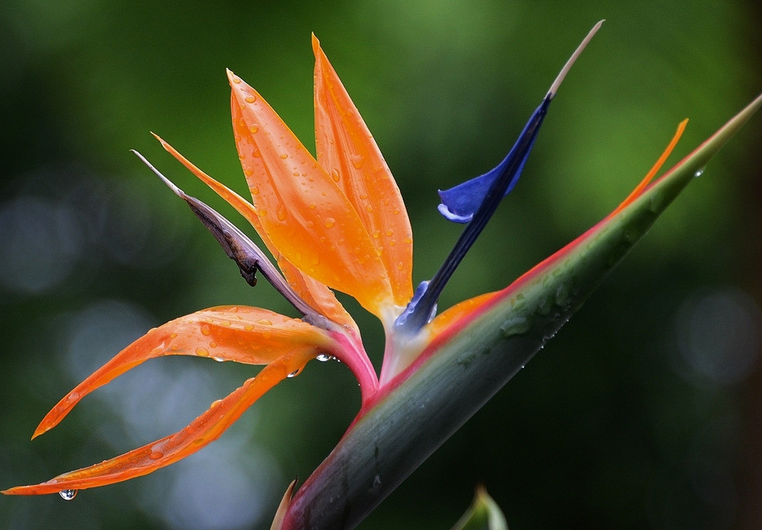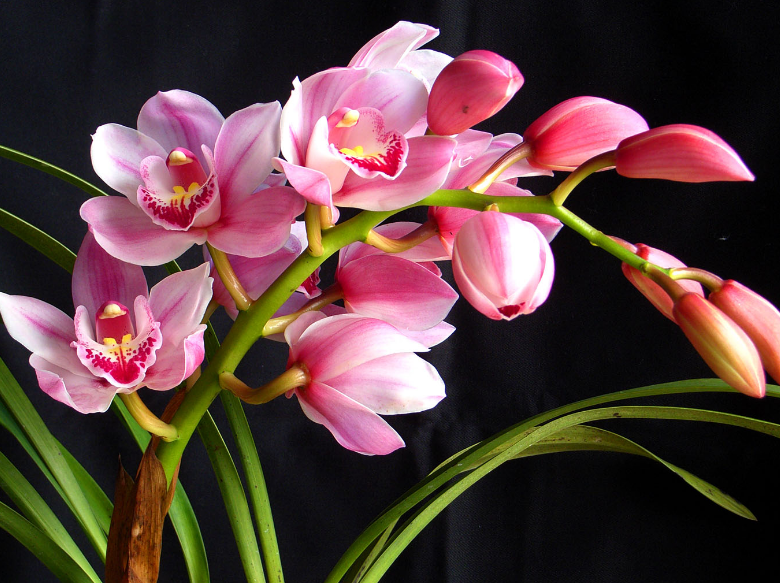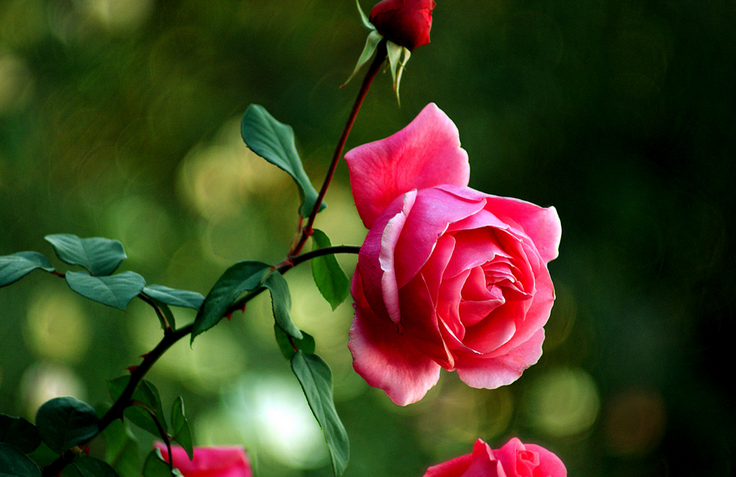The cultivation method and precautions of Stagelaria
Magnolia, also known as paradise bird or paradise bird flower, is a monocotyledonous plant native to South Africa. The editor of the decoration network reminds you that when you breed the orchid, you must first master some relevant knowledge. Here we will learn more about it with the editor of the decoration network.

Culture methods and matters needing attention of Magnolia paniculata
Breeding methods of Magnolia paniculata
1. Ramet propagation
The ramet propagation of Magnolia is generally suitable from April to June. The healthy adult plants with more than 5-6 tiller buds and no diseases and insect pests were selected. The ramet can be used to retain the mother plant and not to retain the mother plant. Ramets are planted in nutritious, well-ventilated slightly acidic sandy loam or special cultivation medium, and should not be planted too deep. The root neck of the foliage must be exposed to the ground, but the fleshy root must not be exposed to the ground. Immediately after planting, it should be watered thoroughly and protected with a sunshade net for a few days. After the seedlings begin to sprout new leaves, they can be transferred to normal management.
2. Sowing and reproduction
The seeds of Magnolia are as hard and black as beans, with orange-red fluff at the seed tip. Soak in water for 4-5 days and the water temperature is 15 ℃. Sow it in a tile basin or hard plastic plate after fully absorbing water, and the substrate temperature should reach 18-22 ℃. The receptacle is covered with glass to avoid rodent damage. Spray water to keep warm, about 20 days to emerge seedlings, to shade. When the seedlings grow to 5-7 cm, they can be transplanted into the mud basin. It is better to mix 4 parts of garden soil, 3 parts of orchid mud, 2 parts of sandy soil and 1 part of mountain mud. To water thoroughly, apply light bean cake or 1% nutrient solution every half a month after July, or apply potassium dihydrogen phosphate compound fertilizer 1Ru 250 solution. Start to control water in September to avoid getting too wet. Avoid direct sunlight and excessive drought throughout the growth process. It can produce 4-5 leaves that year, with a height of about 20 cm. When turning the basin and adding soil every year, when 12-14 leaves grow, it changes from seedling stage to flowering stage.
3. Propagation by tissue culture.
The explants were propagated with petioles or shortened stems by tissue culture, rinsed with 70% alcohol for 5 minutes, then disinfected with 0.3% mercuric chloride solution for 15 minutes, and finally rinsed with aseptic distilled water. The medium was cultured in MS liquid medium supplemented with indolebutyric acid 2.5mg / L, naphthylacetic acid 1.0mg / L, kinetin 5mg / L, 2min 4murD 0.5mg / L. The explants can also use terminal buds. Inflorescence rachis and stem nodes.
Culture methods of Magnolia paniculata
1. Temperature management: the orchid prefers warm, humid and semi-shady environment, the suitable temperature is from 12 ℃ to 25 ℃, and the room temperature should be kept above 5 ℃ in winter. Suitable for the growth of loose and deep humus soil. Natural florescence is autumn and winter, such as temperature, light, fertilizer and water are suitable, the four seasons can blossom, each flower can bloom for more than a month.
2. Watering management: generally speaking, watering should be dry and wet, and adequate watering should be made in summer. In spring and summer, we should often spray water on the leaves and sprinkle water on the ground around flowerpots, so as to improve air humidity and create a cool environment. It is beneficial to its growth and development. Watering should be reduced after late autumn, and watering should be controlled in winter to keep the basin soil dry.
3. Fertilization management: during the growing period of the orchid, it is required to apply thin fertilizer and water every semimonthly, and it is best to irrigate fermented rice washing water or soya bean soaking solution. 0.5% calcium superphosphate can be added to the fertilizer solution from the formation of the flower stem to the full flowering stage, which will make the flower color more gorgeous.
4. basin soil management: Magnolia has thick fleshy roots, so it can be mixed with 5 parts of rotten leaf soil or peat soil, 3 parts of garden soil, 1 part of rotten stable fertilizer soil and 1 part of coarse sand. If the permeability of the cultivated soil is poor, coupled with too much watering, it is very easy to cause rotten roots. The root system of Clematis paniculata is developed and grows fast, so it is necessary to change the basin in time.
5. Sowing and planting: Magnolia usually does not bear seeds, but can bear seeds if it is artificially pollinated. The seeds can mature in three months, and should be sown immediately after collection. The seeds germinate from 2 to 3 weeks at the temperature of 25 ℃ to 30 ℃, and the seedlings can not blossom until three years later.
6. Family breeding: ramet propagation is generally adopted, which can be carried out in both spring and autumn. The method is to buckle the seedling basin upside down, cut it from the root neck with a knife, and smear plant ash at the cut to prevent mildew. Split propagation, each plant is required to retain 2 to 3 buds, the same year will be able to blossom.
Matters needing attention in the culture of orchid
The orchid prefers a warm and humid climate, adequate sunshine, humid air, fear of strong light exposure, not cold-resistant, fleshy roots, both afraid of waterlogging and drought, and if the basin soil is wet for a long time, it is easy to cause root rot, so watering should be wet between dryness and dryness. in addition to adequate watering in summer and flowering, watering should be appropriately reduced in early spring, and watering should be controlled when room temperature is low in winter.
In summer, we should pay attention to spraying water on the leaves and sprinkling water on the surrounding ground once or twice a day, in order to increase air humidity and reduce temperature. Should be properly shaded to avoid direct light, otherwise it will burn the leaves. The suitable temperature for growth is 18 ~ 24 ℃. When the temperature exceeds 32 ℃, water should be sprayed to cool down.
At present, the method of ramet reproduction is the best breeding method, which is more popular in the market, mainly because of its peculiar flower shape, long florescence and good ornamental effect, which can be used to decorate the environment to give people a sense of elegance and freshness.
Culture methods and matters needing attention of Clematis paniculata
The scientific name of the crane orchid is in memory of Queen Charlotte, Princess George III of England. The flower stem is higher than the leaf, the inflorescence lengthens horizontally, the outer petal of the flower is orange, the inner petal is bright blue, and the stigma is pure white, which is similar to that of the crane. The leaf is oblong-lanceolate, because of the peculiar shape and bright color of the orchid, it can be raised in water for up to 20 days in summer and about 50 days in winter, which is known as the "king of fresh cut flowers". The leaves are big and beautiful with strange flowers. Potted magnolia is suitable for the layout of conference rooms and halls with a sense of freshness and elegance. Courtyards are planted in the south, which adds to the natural scenery. Orchid alias: bird of paradise flower, bird of paradise, bird of paradise, origin: South African orchid florescence between summer and autumn, flowering for up to two months. The orchid is full of sunshine, but it is not resistant to the hot sun. Where the light is weak, the growth is slender, the bud is few, and the flowering is abnormal or non-flowering. The orchid likes to be warm in winter and cool in summer. Magnolia likes the cultivated soil which is rich in humus, well drained and breathable. Although the orchid likes to be wet, it has the characteristics of fear of drought and waterlogging, such as stagnant water in the basin soil, which is easy to cause root rot.
Key points for the maintenance of Clematis paniculata:
Magnolia has thick fleshy roots, so it can be mixed with 5 parts of rotten leaf soil or peat soil, 3 parts of garden soil, 1 part of rotten stable fertilizer soil and 1 part of coarse sand. If the permeability of the cultivated soil is poor, coupled with too much watering, it is very easy to cause rotten roots. The root system of Clematis paniculata is developed and grows fast, so it is necessary to change the basin in time. In general, the seedling stage should be changed once a year. After flowering, the adult plant can be changed every other year. When the adult plant changes the basin, it is appropriate to choose the deep tube basin, because this kind of basin internal space is big, is advantageous to the root system to develop around.
The orchid prefers fertilizer and needs adequate nutrition supply. During the period of growth and development, thin cake fertilizer should be applied every 2 weeks, and 0.5% calcium superphosphate can be added to the fertilizer solution from the formation of the flower stem to the full flowering stage, which will make the flower color more beautiful. Those who are not ready to leave seeds after flower fade should cut off the residual pedicels in time to reduce nutrient consumption. Fertilizer will be stopped after the middle of October. The northern area can safely survive the winter by entering the house in the middle and late October, stopping fertilization during the overwintering period and keeping the room temperature above 10 ℃.
Appropriate amount of water should be mastered in water management, and the amount of watering should be determined by seasonal changes, plant growth status and the actual degree of soil dryness and humidity. Generally speaking, watering should be dry and wet, and summer watering should be adequate. In spring and summer, we should often spray water on the leaves and sprinkle water on the ground around flowerpots, so as to improve air humidity and create a cool environment, which is conducive to its growth and development. Watering should be reduced after late autumn, and watering should be controlled in winter to keep the basin soil dry.
Magnolia should be given sufficient light in winter, spring and autumn. If the light is not enough, the plant will grow weakly and blossom poorly or not. Need to pay attention to shade in summer, it is best to put in the shade shed or tree shade training, can also be put indoor ventilation and bright scattered light maintenance. The orchid likes to be warm and afraid of the cold. The suitable temperature for growth is 18-24 ℃ from March to October and 13-18 ℃ from October to March of the following year. It should not be lower than 8 ℃ in winter. It can be cultivated in open field in the south of China and in greenhouse in the north of the Yangtze River basin. The optimum temperature of flower bud is 23-25 ℃. During the period of flower bud differentiation, the temperature should be stable and rise slowly.
[picture of Clematis paniculata] Culture methods and matters needing attention of Magnolia paniculata
✤
The flower stem of the orchid is higher than the leaf and the inflorescence generally elongates horizontally. the outer petal of this flower is orange, the inner petal is bright blue, the stigma is pure white, the color is dazzling, and the shape of the flower is like a crane looking up into the distance, so it is named the orchid. The leaf shape of the orchid is oblong-lanceolate, and the flower shape is peculiar and colorful. It can be kept in water for 20 days in summer and about 50 days in winter. It belongs to hydroponic plants and is known as the king of flowers. Magnolia is a perennial herb with no stem, its leaf length is about 25~45cm, its width is about 10cm, the top is pointed, the base is round or wedge-shaped, and the lower edge is wavy. Magnolia is an evergreen perennial root flower with a height of about 1-2 meters, the stem is very short and not obvious, the leaf is large and beautiful, and the flower shape is peculiar. It is often placed as a pot in conference rooms, halls and other places. It shows a sense of freshness and elegance. In the south, it is mostly planted in the courtyard to add natural scenery.
Culture methods and matters needing attention of ✤ Magnolia. 1. Temperature conditions. The suitable growth temperature of the orchid is 18-24 degrees Celsius. If the temperature is higher than 40 degrees Celsius in summer, it will hinder the growth. If the temperature is below 0 degrees Celsius or below in winter, it will also suffer from freezing injury. Generally, the culture temperature is not less than 10 degrees at night and can blossom when it is about 20 degrees Celsius during the day. When the orchid grows in a suitable temperature range, each leaf axil can form flower buds and scape flowers. Therefore, controlling the temperature is the key to increase the quantity of orchids. Second, light conditions. Magnolia likes to grow in a sunny environment, but it will be afraid of strong light exposure in summer, so it is necessary to do appropriate shading treatment when breeding in summer, the appropriate light intensity in the growing period is 30000Lx, if excessive exposure in summer, the leaves will roll and grow slowly, and the lack of sunshine in winter will also lead to overlong leaves or weak bending of petiole, not easy to blossom. Therefore, it is necessary to make sure that the orchid is not overcast in winter and not in the sun in summer, otherwise it will affect the yield of cut flowers. Third, soil conditions. Hewang orchid is a fleshy root system that is afraid of stagnant water, so when the soil is too wet and poorly ventilated, it will cause rotting roots. Generally, sufficient water should be supplied during flowering and summer, and appropriate watering should be reduced in early spring and after flowering. In order to improve the humidity in the air and ensure that the water can be fully absorbed, the aboveground part of the plant also needs timely water spraying. Keep the air humidity during the growing period at 60% to 70%. Fourth, fertilizer conditions. Magnolia needs to be fertilized every 20 days or so during its growth, and it is best to use fertilizer and water from rotten cakes. Compound fertilizers based on phosphorus and potassium should be applied 2 or 3 times from flower stem formation to full flowering. In autumn, the amount of nitrogen fertilizer should be appropriately reduced to prevent excessive growth of stems and leaves and affect flower bud development and cold resistance. In summer, because the plant is in a semi-dormant state, the amount of fertilizer and water should be reduced. Remember to stop fertilizing in winter, loosen the soil and increase ventilation by weeding and hoeing.
Conclusion: the orchid is a kind of flower with ornamental value, and the shape of the flower is like a crane looking up in the distance, beautiful in shape, loved by many friends. It can not only be planted as a potted plant, is a good helper for home decoration, but also can be placed in the courtyard for bulk breeding to achieve the role of watching and purifying the air. The above is the editor to bring you about the orchid picture appreciation. It is hoped that the introduction of breeding methods and matters needing attention will be helpful to everyone.
- Prev

Cultivation methods of Cymbidium grandiflora key points for conservation of Cymbidium in four seasons
Cymbidium is very popular because of its large flowers, bright colors, delicate fragrance and elegance, and many people want to raise Cymbidium by themselves. Let's remind you that when you cultivate Cymbidium, you must first master some relevant knowledge. Let's learn more about it with the editor of the decoration network.
- Next

Culture method of potted rose how to raise rose
Rose is known as the queen of flowers and is one of the top ten famous flowers in China. Rose flowers are beautiful and varied. They often bloom at 04:00. They are deeply loved by people and are of high ornamental value. Follow the official Wechat public "wx17house", and go into the decoration network with the editor to see how to raise rose flowers.
Related
- Fuxing push coffee new agricultural production and marketing class: lack of small-scale processing plants
- Jujube rice field leisure farm deep ploughing Yilan for five years to create a space for organic food and play
- Nongyu Farm-A trial of organic papaya for brave women with advanced technology
- Four points for attention in the prevention and control of diseases and insect pests of edible fungi
- How to add nutrient solution to Edible Fungi
- Is there any good way to control edible fungus mites?
- Open Inoculation Technology of Edible Fungi
- Is there any clever way to use fertilizer for edible fungus in winter?
- What agents are used to kill the pathogens of edible fungi in the mushroom shed?
- Rapid drying of Edible Fungi

